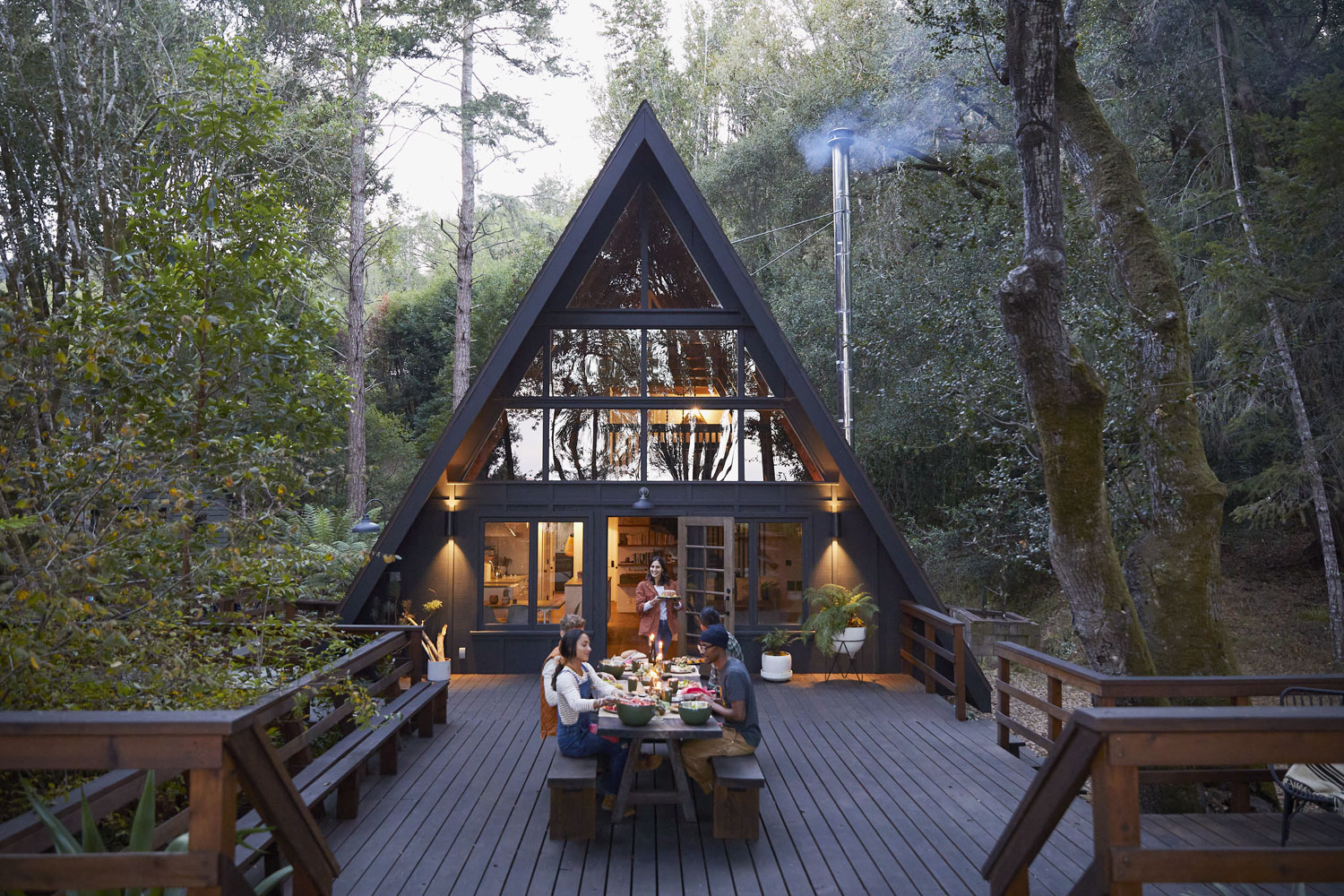We love nothing more than gathering with friends on the deck to enjoy a meal surrounded by the sights and sounds of the cottage—until the flies discover our dish of green beans and a paper plate blows into the lake. Without the right gear and guidance, outdoor dining can be a hassle, so we’ve compiled our favourite tips, inspired by 35 years of embracing the outdoors, for making every meal memorable.
Elevate the experience with the right tools
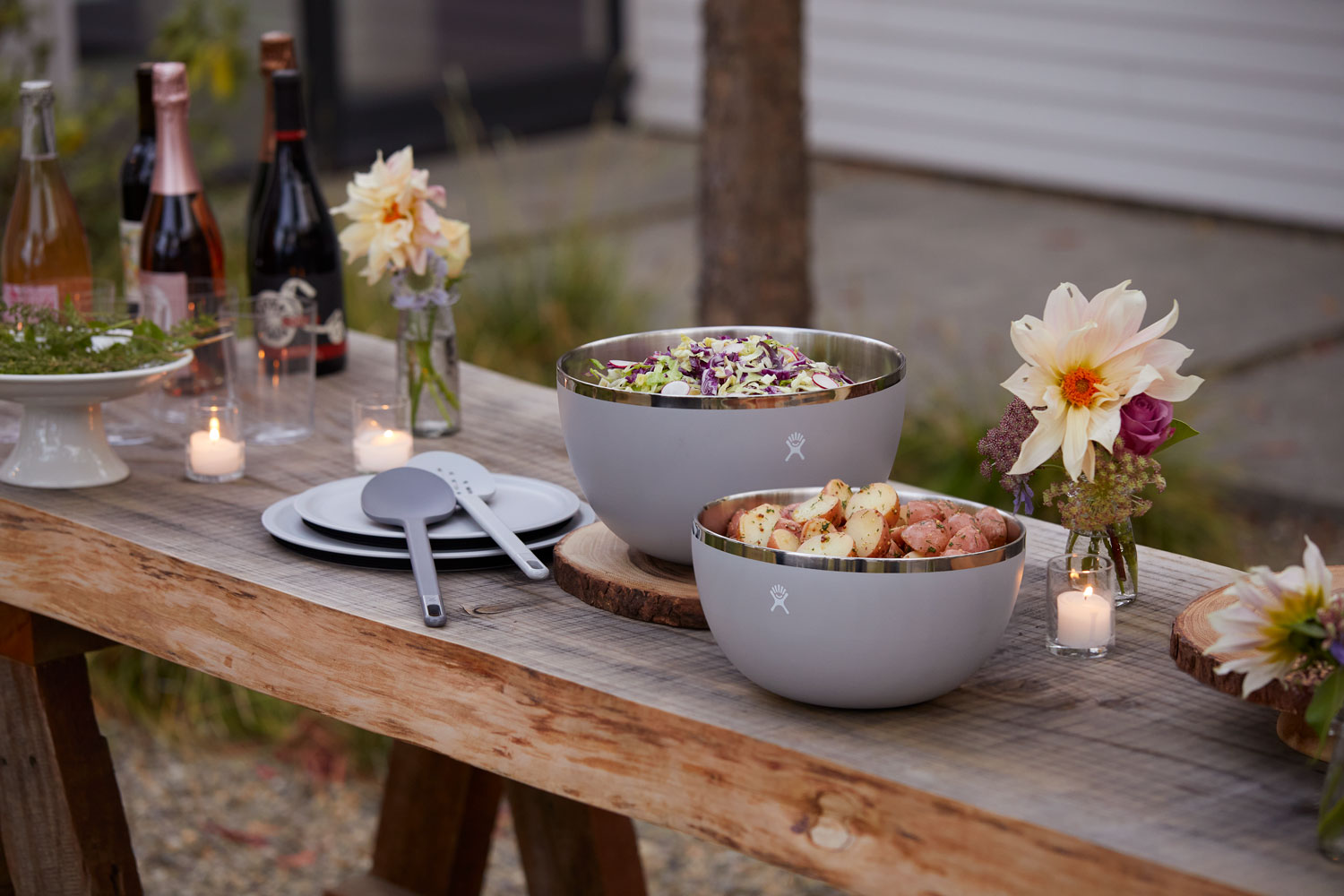
Respecting nature is a core value of every cottager. So there’s something unsettling about using cheap, disposable cutlery and dishes on the deck, around the fire, or when you’re camping. We’re not suggesting you lug your silverware drawer to the beach, but with Hydro Flask’s Outdoor Kitchen line, which features durable materials like stainless steel and dishwasher-safe powder coating, you can embrace both practicality and style without feeling icky about loading up a landfill.
Grill more than meat

A sizzling steak is a cottage classic, but your grill is capable of so much more. Grillable veggies like cauliflower, corn and asparagus make for tasty in-season alternatives, while fruits like pineapples and peaches get guests excited—especially if they follow a plant-based diet. And for unmistakable umami flavour, there’s no topping a grilled portobello mushroom. Complement the meal with grilled corn on the cob, and you can’t go wrong.
A plan for all seasons
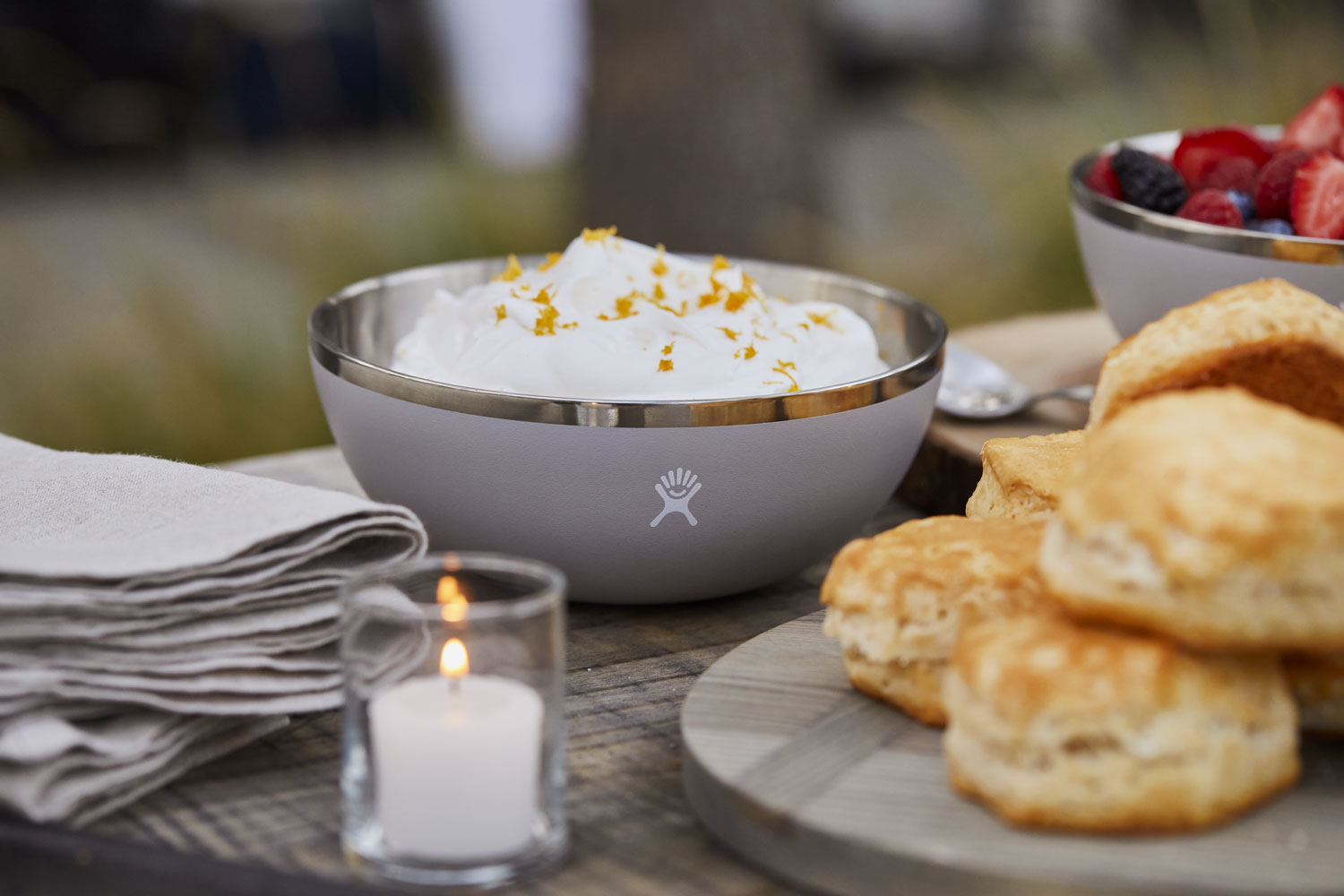
Unless you’re dining outdoors in a Canadian winter, something local is bound to be in season. In Ontario cottage country, asparagus, fresh green beans, field cucumbers, and rhubarb all ripen in early summer, while strawberries, raspberries, watermelon, and tomatoes are ready by July. Hit up a farmer’s market during your trek to the lake, because the cottage is the perfect place to embrace all of that freshness.
Keep it simple until dinner
The cottage is all about taking it easy, so we have a surefire recipe for reducing meal stress: breakfast and lunch should be simple, solo, and grab-and-go. That way, both early risers and fans of sleeping in can eat on their own terms, and guests can plan their own daytime adventures without being tethered to the kitchen for lunch. Dinner, on the other hand, should bring everyone together to share (and help prepare) a big meal that lets them wind down and savour each other’s company.
Comfort extends the fun
We love rustic decor, but that doesn’t mean roughing it when it comes to outdoor seating arrangements. By simply adding weatherproof cushions to your outdoor seating—and ensuring there’s enough comfortable seating for everyone, you’ll be much more likely to extend a great meal into a memorable evening on the deck.
Don’t let wind get in the way
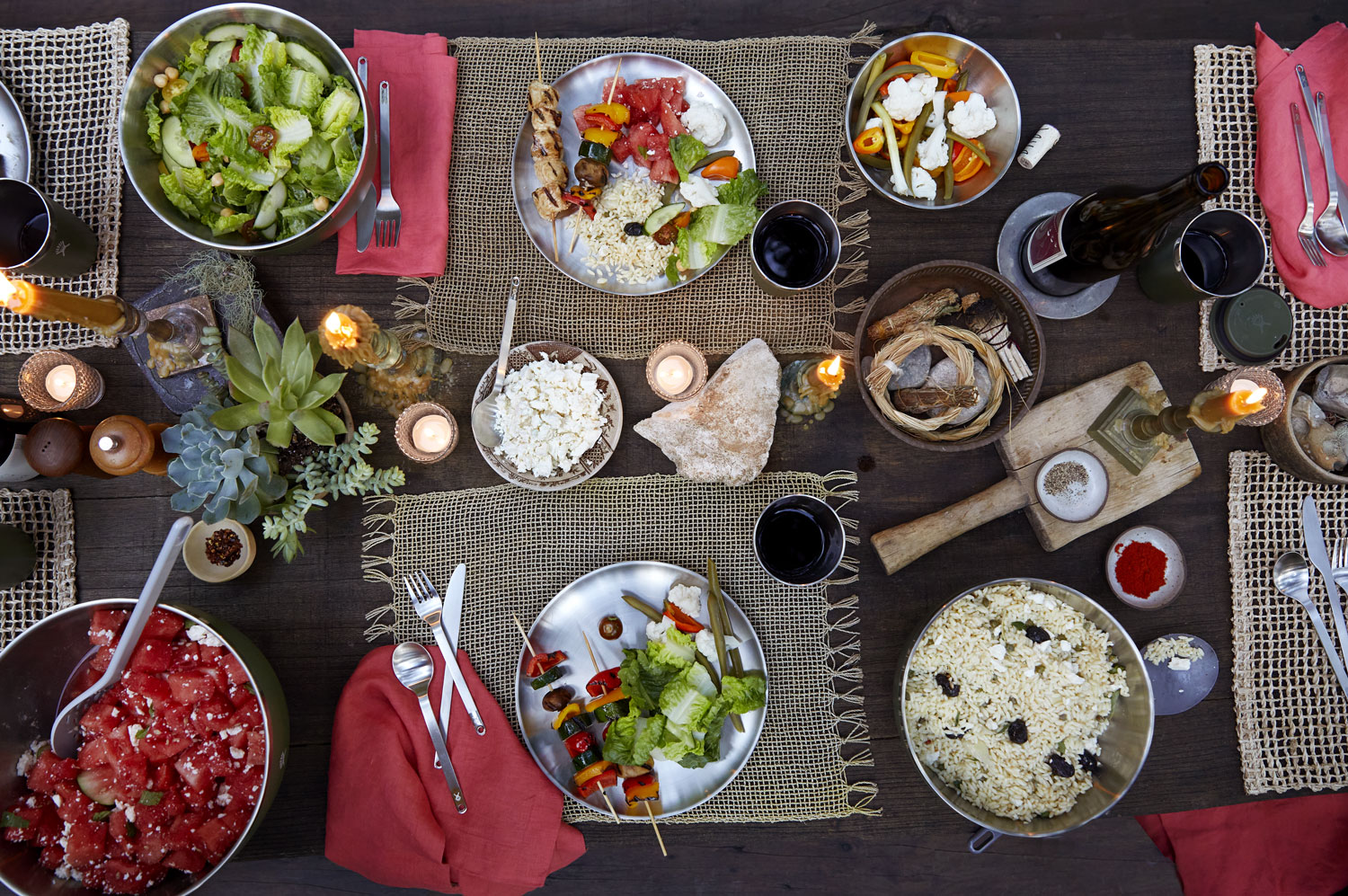
A bit of wind is a blessing during mosquito season—even a breeze of 16 km/h can thwart their flight—but no one wants to fish rogue serviettes out of the lake after dinner. If your deck doesn’t offer much shelter from the wind, be sure to opt for heavier cloth napkins and dishes made from a heavier, more durable material that’s outdoor friendly. Hydro Flask’s 10 inch plate, made with pro-grade stainless steel and TouchShield double-wall insulation, is guaranteed to steal the show without getting taken by the wind.
Throw shade at the sun
A sunny day at the cottage feels like a luxury—until your salad starts wilting in the glaring heat. To make your deck more comfortable for outdoor dining, a bit of shade goes a long way, whether it’s a cantilever umbrella (go with the heaviest-possible base to contend with off-the-lake winds), a retractable awning, or a vine-woven pergola. Whatever you choose, a bit of shade can turn your outdoor dining space into your favourite “room” at the cottage.
Stations bring guests together
If your outdoor dining table is on the smaller side, you might be tempted to hoard drinks and desserts inside your cottage and bring them out as needed. But when you’re entertaining more than a few guests, setting up “stations” like a bar area or a lemonade stand on your deck lets them help out by serving themselves. A simple washtub or cooler with ice (salted to stay extra cold) is all it takes, and you’ll likely find that setting up a drinks station encourages more mingling. And in case you need a portable drink station, Hydro Flask’s soft coolers are perfect for filling with ice and hauling to the dock, the beach, or wherever else the party takes you.
Don’t bug out
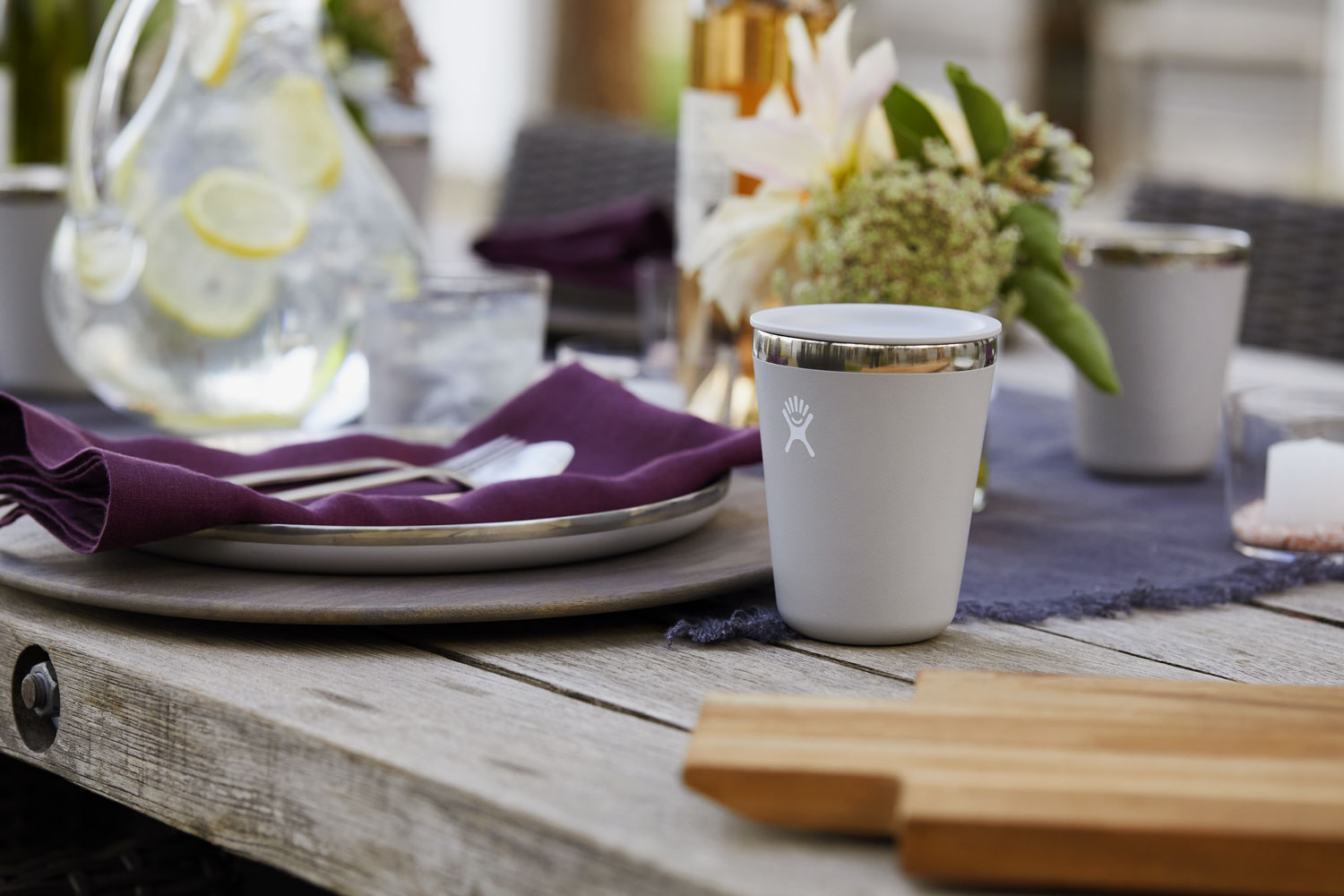
Mosquitos and blackflies can ruin the vibe of any outdoor meal, but soaking yourself in smelly repellant isn’t ideal when you’re eating. Whether you opt for candles, torches, or a cartridge-based system, spatial repellant is a great way to keep the bugs at bay. And be sure to invest in mesh food covers to keep flies from landing where they shouldn’t. Even better, Hydro Flask’s Outdoor Kitchen serving bowls and tumblers have press-in lids that make them both off limits to bugs and easy to stack.
Give the stars a little help

Those patio lanterns might have been the stars in our sky two decades ago, but outdoor lighting has come a long way since then. Strands of LED string lights (strung loosely for a casual vibe) give your deck an inviting glow, while fairy lights in Mason jars can be placed anywhere for extra ambiance. If you’re feeling fancy, a rustic outdoor chandelier or battery-powered candles are perfect for setting the mood on a special occasion.
Want to elevate your outdoor dining experiences this cottage season? Discover your favourite new outdoor dining set at MEC or wherever you shop for your outdoor gear!
Let’s make good changes for good reasons. Visit https://www.hydroflask.com/refill-for-good for more information.

